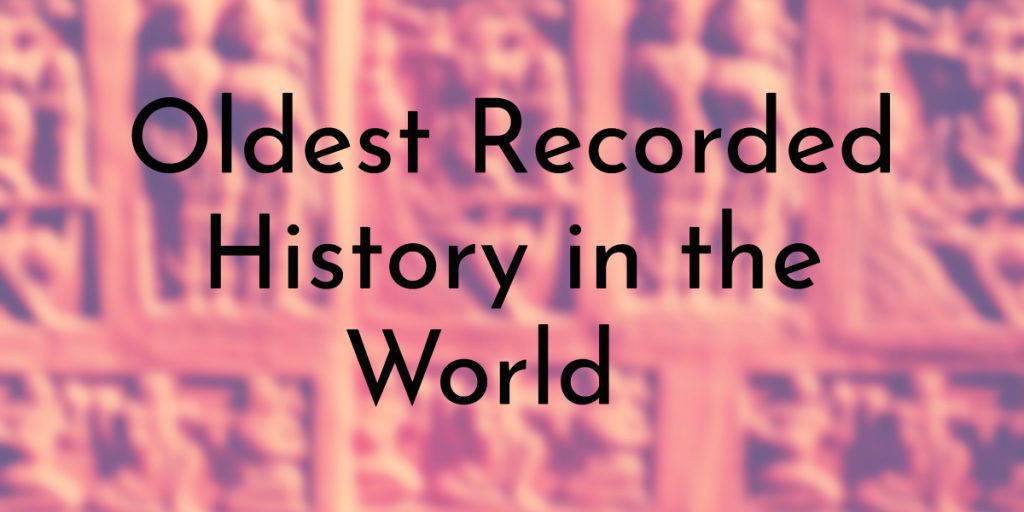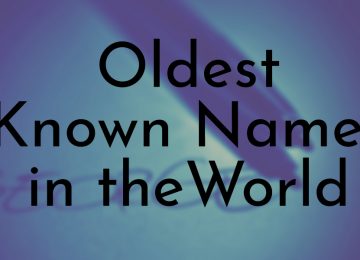Our ancient human ancestors developed language around 35,000 BCE, which is when the world’s oldest cave paintings were created. These early humans expressed their thoughts and recorded their lives and surroundings through pictures. Eventually, this evolved into written language which emerged with what are believed to be the world’s first true civilizations around c. 3500 – 3000 BCE.
The Sumerians from Mesopotamia developed a system of writing called cuneiform and quickly began keeping records of many aspects of their lives. Not long after, the Egyptians began using hieroglyphics and also kept extensive records. Many of these ancient records survived and have been translated.
8. Chinese Oracle Bones
Year Recorded: late 2nd millennium BCE
Location: Yinxu, China (modern-day Anyang, Henan Province)
Writing System/Language: Oracle Bone Script (Archaic Chinese)
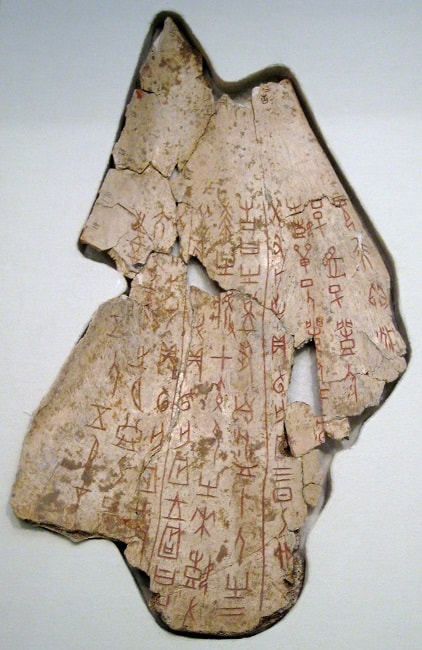 photo source: Wikimedia Commons
photo source: Wikimedia Commons
The Oracle Bones from China contain ancient inscriptions that date to around the late 2nd millennium BCE. The writing on the bones is called Oracle Bone Script and is the oldest known form of writing from China. Most of the Oracle Bones that have been uncovered so far were found in Yinxu (modern-day Anyang), one of the most important capitals of Ancient China.
As the name suggests, the Oracle Bones were used for divination during the Shang Dynasty (c. 1600-1046 BCE). The bones used came from animals, including ox shoulder blades and the flat under-part of a turtle’s shell. The Oracle Bones are the most important primary source of information about Bronze Age China.
7. Reforms of Urukagina
Year Recorded: c.2500 – 2340
Location: Girsu (modern-day Tell Telloh, Iraq)
Writing System/Language: Cuneiform
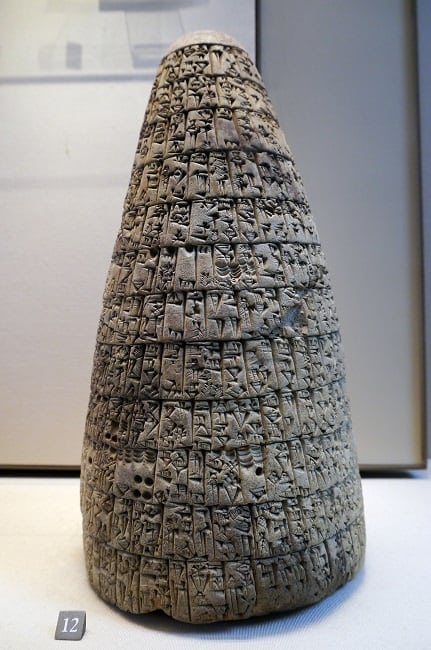 photo source: Wikimedia Commons
photo source: Wikimedia Commons
The Sumerians had a well developed civilization and its rulers implemented many laws. The oldest legal code or “Bill of Rights” ever discovered comes from the Sumerians and is known as the Reforms of Urukagina. The reforms were inscribed onto clay cones that date to between 2500 – 2340 BCE.
Urukagina was a Sumerian king who wanted to reform society and implement changes that would benefit the common people. The Sumerian king’s reforms also established basic legal rights for his citizens. While Urukagina set out to overturn the worst corruption in Sumerian society, he wasn’t trying to lead some kind of revolution against the aristocracy.
6. Kesh Temple Hymn
Year Recorded: c.2550 – 2520 BCE
Location: Temple library of Nippur, Tell Abu Salabikh (modern-day Nuffar, Iraq)
Writing System/Language: Cuneiform
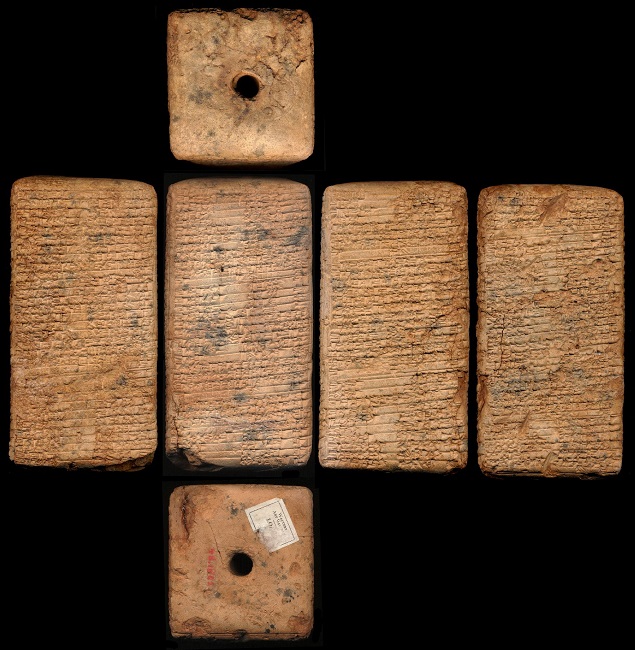 photo source: Wikimedia Commons
photo source: Wikimedia Commons
The Kesh Temple Hymn is known for being one of the oldest surviving pieces of literature in the world. The oldest version of the Kesh Temple Hymn was found at the Temple Library of Nippur in what was once Tell Abu Salabikh (modern-day Iraq). The tablet was radiocarbon dated to around 2550 – 2520 BCE. This version of the Kesh Temple Hymn in incomplete and the rest of the hymn has been pieced together from other tablets.
The Kesh Temple Hymn is an ode to the Sumerian god Enlil, who ruled over all of the other gods. The hymn also describes the temple at Kesh, which was dedicated to to the goddess Ninḫursag or Nintu, who was one of the four great gods/goddesses worshipped in Ancient Sumer. The Kesh Temple Hymn has been translated so that we can enjoy this ancient piece of literature today.
5. Seal of Seth-Peribsen
Year Recorded: c.2890 – c. 2670 BCE
Location: Umm el-Qa’ab necropolis, Abydos, Egypt
Writing System/Language: Egyptian Hieroglyphics
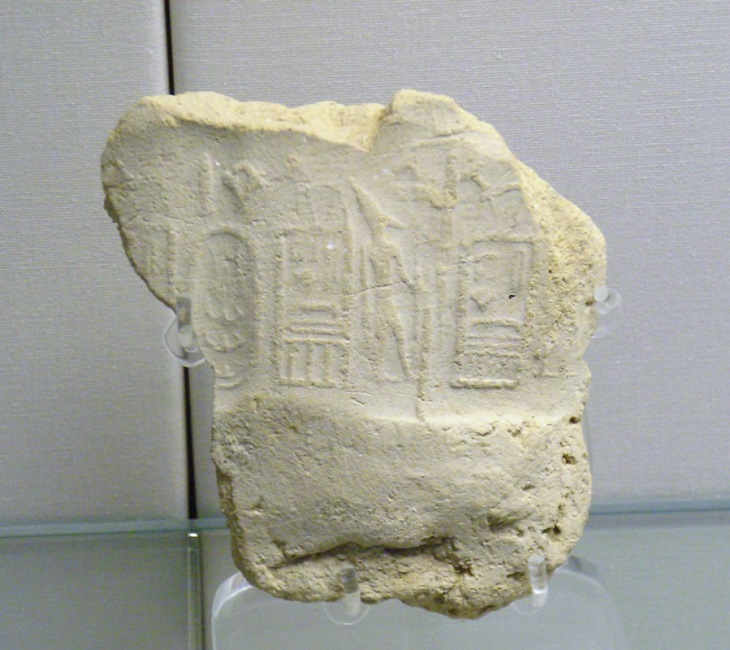 photo source: Wikimedia Commons via Udimu
photo source: Wikimedia Commons via Udimu
A clay seal found on the tomb of Seth-Peribsen contains what is believed to be the earliest known full sentence written in hieroglyphs. The seal dates to around 2890 – 2670 BCE. The inscription reads, “The one of Ombos (Seth) has handed over the two realms to his son, the King of Upper and Lower Egypt, Peribsen.”
Seth-Peribsen was a 2nd Dynasty king of Ancient Egypt and is known for being the only ruler who chose Seth (also called Set) as his patron god instead of Horus, which had been the tradition of the kings since the 1st Dynasty. There are no records explaining why Peribsen chose Seth and his choice may have been motivated by personal, religious, or political beliefs.
4. Beer Payslip
Year Recorded: c.3100 – 3000 BCE
Location: Uruk (modern-day Iraq)
Writing System/Language: Cuneiform
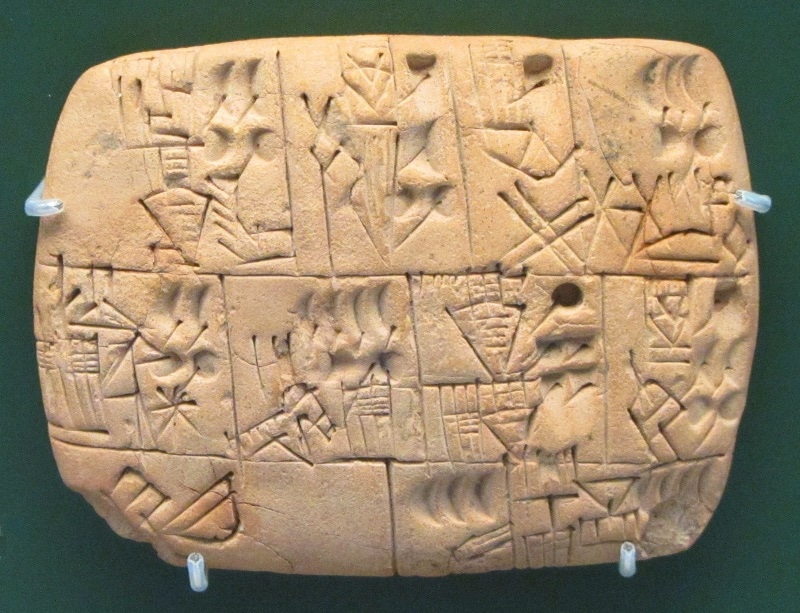 photo source: Wikimedia Commons via BabelStone
photo source: Wikimedia Commons via BabelStone
In 2016, a 5,000 year old Sumerian cuneiform tablet from the ancient city of Uruk (what is now Iraq) was revealed to be a payslip. The most interesting thing about this payslip is that it says that workers were sometimes paid with beer. According to archaeologists, the tablet has the cuneiform symbols for rations and a conical vessel that represents beer. The other markings on the tablet make note of how much beer was owed to a specific worker.
Compensating workers with alcohol wasn’t a practice unique to the Sumerians, the Egyptians also often paid workers with beer for working on the pyramids. While it may seem a little odd to our modern customs, paying workers with beer was sensible because it doubled as a food source because it was loaded with starches and nutrients.
3. Narmer Palette
Year Recorded: c.3200 – 3000 BCE
Location: Temple of Horus, Nekhen (modern-day Aswan Governate), Egypt
Writing System/Language: Egyptian Hieroglyphs
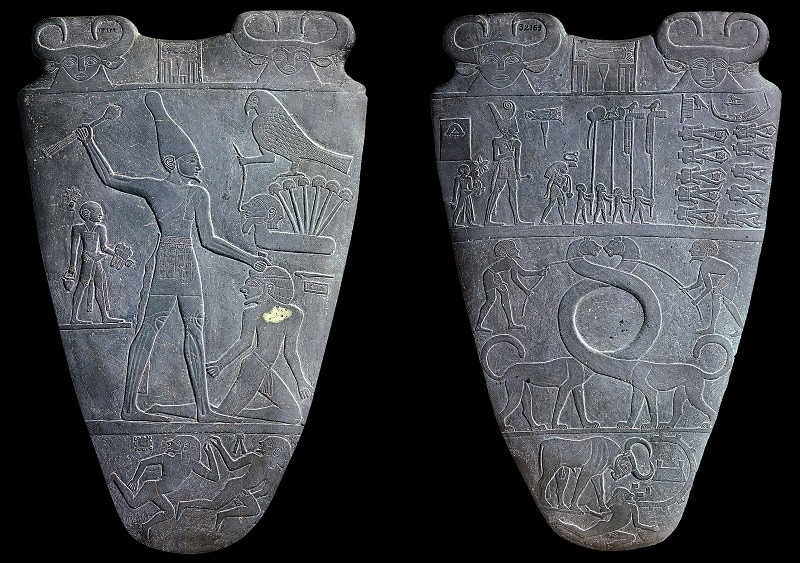 photo source: Wikimedia Commons
photo source: Wikimedia Commons
The Narmer Palette is widely believed to be one of the most valuable Egyptian artifacts, but has been hard to interpret since its discovery. The palette is exquisitely crafted and still completely intact despite dating back to around 3200 – 3000 BCE.
First discovered in 1898 by James Quibell and Frederick Green, the Narmer Palette was found among other ceremonial objects in the Temple of Horus in Nekhen (also called Hierakonpolis). There have been many interpretations of what the hieroglyphs on the Narmer Palette represent and there is not a single agreed upon interpretation. Archaeologists do know that the palette makes reference to Narmer, a First Dynasty king of Ancient Egypt.
2. Hieroglyphic Billboard
Year Recorded: c.3250 BCE
Location: El-Khawy, Egypt
Writing System/Language: Egyptian Hieroglyphics
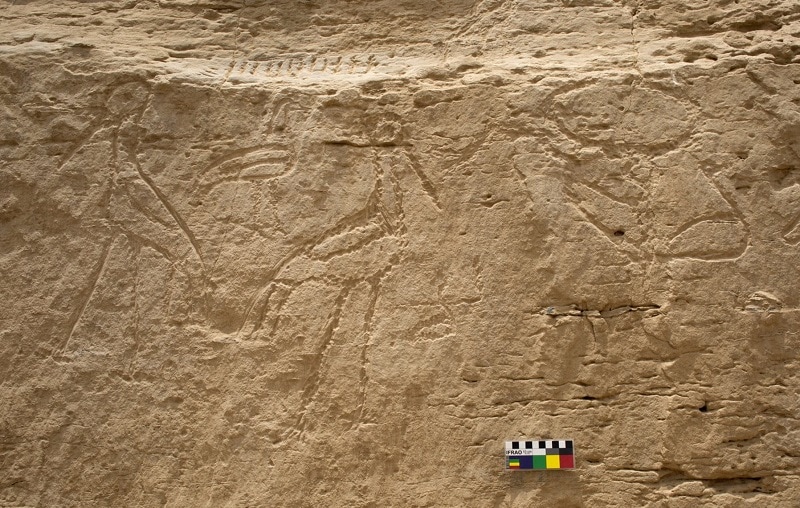 photo source: Live Science
photo source: Live Science
Recently, in June 2017, archaeologists discovered what is being called a “billboard” of hieroglyphs on some rocks near the village of El-Khawy in Egypt. The hieroglyphics are some of the largest and oldest ever found and date back to the early era of Egyptian hieroglyphic writing. The archaeologists also found an old carving of elephants that was created around 4000 – 3500 BCE.
The four hieroglyphic signs are not quite as old as the elephant carving, but they date back to around 3250 BCE. Archaeologists called the hieroglyphic carvings a billboard because they believe the writers were making a statement. The hieroglyphs are about 70 centimeters (27.5 inches) high and contrast with the surrounding brown rocks.
1. Scorpion I’s Tomb Hieroglyphs
Year Recorded: c.3400 – 3200 BCE
Location: Umm el Qu’ab necropolis, Abydos, Egypt
Writing System/Language: Egyptian Hieroglyphs
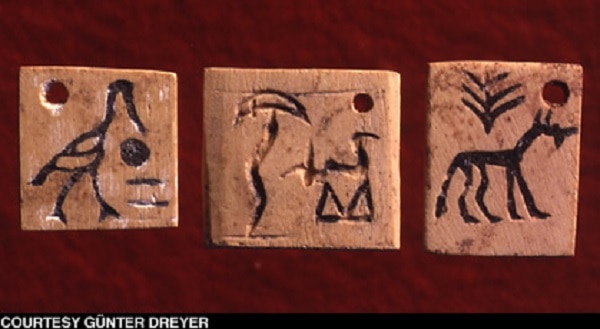 photo source: archive.archaeology.org
photo source: archive.archaeology.org
A small collection of bone and ivory tags, pottery vessels, and clay seal impressions were uncovered at the Umm el Qu’ab necropolis in Abydos, Egypt. The artifacts contain what are believed to be the earliest known Egyptian writing. The hieroglyphs date to between 3400 – 3200 BCE and are the oldest recorded history discovered so far in the world.
The hieroglyphs were found in Tomb U-j, which is believed to hold the remains of Scorpion I, one of the first rulers of Ancient Egypt. The bone and ivory tags were used as labels and provide information on the exchange of goods such as grains and fabrics. While this is the oldest Egyptian writing yet discovered, archaeologists know that Egyptian writing had been around much earlier, but none of those hieroglyphs, if they even still exist, have been found.
OTHER POSTS YOU MAY BE INTERESTED IN


